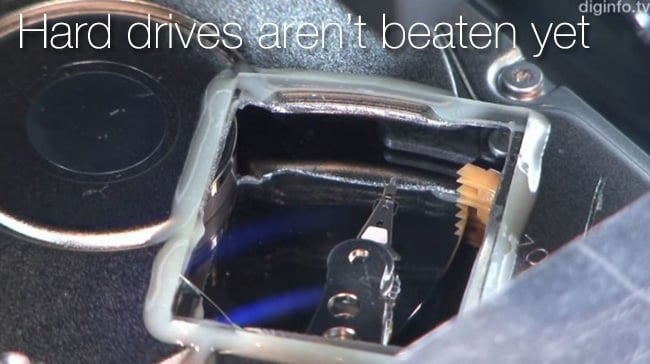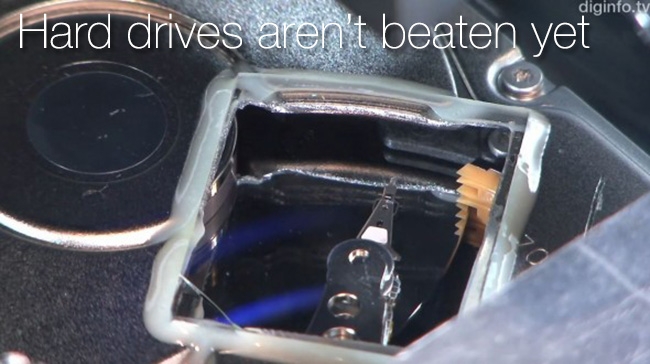
 Hard drives aren't beaten yet
Hard drives aren't beaten yet
There has been a lot of speculation recently about hard drives being replaced by SSD's, but hard drives still have the advantage when it comes to capacity. Two new technologies are about to make that advantage even greater
Although SSD's are attractive in terms of speed and robustness they still have a long way to go before they can challenge hard drives on price per Gigabyte. Two new technologies are about to push the bar even higher.
Helium Filled Drives
No it's not to make them lighter (although technically it does) but to reduce the drag on the spinning platters in the drive. Helium is only 14% as dense as air, so a drive filled with Helium can have more platters spinning in a smaller space without putting too much load on the drive mechanism.
Western Digital subsidiary HGST have just released their UltraStar He6 drives, which have 6TB of storage capacity and use 23% less power than the previous model. They also run 4-5 degrees cooler which will make a difference in a big data centre.
Netflix, CERN and Huawei have been testing prototype drives. According to Olof Bärring, a CERN IT Department section leader:
"We have tested the helium drive and it looks very promising: it surpassed our expectations on power, cooling and storage density requirements. We're excited about the opportunity to qualify the HGST Ultrastar He6 hard drive in our environment."
HGST's press release states: "HGST's helium platform will serve as the main platform for new technologies like shingled magnetic recording (SMR) and heat-assisted magnetic recording (HAMR) where HGST will continue to push the HDD areal density envelope. The helium platform will also serve as the future building block for new, growing market segments such as cold storage, a space that HGST plans to address over the next couple of years."
Heat assisted recording
The other new technology is HAMR or heat assisted magnetic recording, using a Laser to heat a tiny spot on the drive platter to enable the magnetic signal to be recorded in a smaller point. TDK have been colaborating with Seagate and recently demonstrated drives using this technology.
They predict that this could lead to a ten fold increase in drive capacity by 2020, so we could be seeing 40-60TB drives by then.
They hope to release the first drives using Laser Heating in 2015.
Here is a video about the recent demonstration that took place at the CEATEC exhibition in Japan:
Video after the break
Tags: Technology


Comments